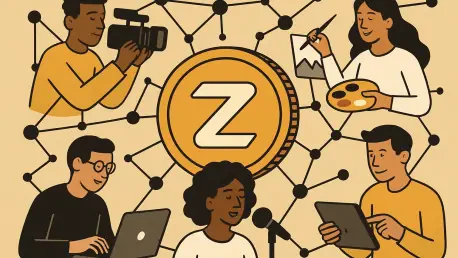Welcome to an exciting deep dive into the world of decentralized social networks and content creation! Today, we’re thrilled to chat with Nia Christair, a renowned expert in mobile technology with a wealth of experience in app development, hardware design, and enterprise solutions. With her finger on the pulse of emerging tech trends, Nia is the perfect person to break down the meteoric rise of Zora, a groundbreaking platform that’s making waves in the crypto and content creation space. In this interview, we’ll explore what sets Zora apart as a decentralized network, the factors fueling its staggering token price surge, the impact of recent controversies, and how its integration with major platforms is shaping its growth.
How would you describe Zora to someone new to the concept of decentralized social networks, and what makes it stand out from traditional platforms?
Zora is a fascinating project that operates as a decentralized social network and content creation platform, built on Ethereum’s layer-2 technology using the OP Stack. Unlike traditional social media, where a central authority controls data and monetization, Zora empowers users—especially artists and musicians—by letting them own and monetize their content directly through blockchain technology. What really sets it apart is its focus on community and creator ownership. It’s not just about posting content; it’s about creating value and rewarding creators with its native token for their contributions. This model flips the script on how creators are compensated compared to centralized giants where ad revenue often benefits the platform more than the user.
What do you think is behind the incredible price surge of Zora’s token, with gains like 43% in a day and over 1,500% in a month?
The surge in Zora’s token price is a mix of market dynamics and growing interest in decentralized content platforms. A big driver is the heightened activity on the platform, especially with spikes in coin creation and trading volume. When you see numbers like 47,000 new issuances in a single day, as we did on August 10th, it signals massive user engagement. Additionally, broader trends in the crypto space, like the growing appetite for layer-2 solutions and creator-focused tokens, are funneling attention to Zora. Listings on major exchanges for futures trading with high leverage also amplify speculative interest, pushing prices up as more investors jump in.
Can you walk us through the controversy surrounding Zora’s airdrop in April and the mix-up with an unofficial Base token?
Absolutely. Back in April, there was a bit of a mess when the official Base account posted content that got minted as a tradable token on Zora. It sparked a trading frenzy, with the asset’s market cap hitting nearly $17 million before crashing over 90% in just hours once people realized it wasn’t an official Base token. Shortly after, Zora announced its own airdrop, and some in the community accused the team of timing it to capitalize on the confusion. The Zora team denied any coordination, emphasizing transparency, but it did stir up debate about trust and communication in the space. While it caused a temporary hiccup, I think the platform’s growth since then shows that the core value proposition still resonates with users.
Zora saw a massive spike in daily traders, reaching an all-time high of over 280,000. What do you believe triggered this explosion in activity?
That spike is tied to a combination of hype and strategic moves. The airdrop, despite the controversy, got a lot of eyes on Zora, drawing in traders looking to capitalize on early opportunities. High-profile endorsements also played a huge role—when influential figures in the crypto space publicly support a project, it creates a ripple effect of interest. On top of that, the ease of access through integrations and the buzz around content coin creation made Zora a hot spot for speculative trading. It’s a classic case of momentum building on itself in the fast-paced crypto world.
Speaking of integrations, how has Zora’s addition to the Base App in mid-July influenced its growth trajectory?
The integration into the Base App was a game-changer for Zora. It lowered the barrier for retail investors and casual users to engage with the platform, as they can now mint tokens without leaving the app. This seamless experience gives Zora a leg up over competitors by making it more user-friendly and accessible to a broader audience. Since mid-July, we’ve seen a noticeable uptick in new users and token minting activity, which directly correlates with this move. It’s a smart play to capture market share in the competitive coin-minting space.
With tokens on Zora reaching market caps as high as $14.4 million and even niche brands getting involved, how do you feel about the diversity of creators and companies jumping on board?
I think it’s incredibly exciting to see such a wide range of creators and brands engaging with Zora. It shows the platform’s versatility—whether it’s individual artists, musicians, or even unconventional brands, everyone can leverage Zora to tokenize their content or ideas. This diversity not only validates the platform’s model but also enriches the ecosystem by bringing in varied perspectives and audiences. It’s a testament to how blockchain can democratize content creation and monetization, though it also raises questions about quality control and long-term value for some of these tokens.
Looking ahead, what is your forecast for Zora and the broader decentralized content creation space in the coming years?
I’m bullish on Zora and the decentralized content creation space as a whole. Zora has positioned itself as a leader by focusing on creator empowerment and leveraging layer-2 scalability, which addresses some of the cost and speed issues on Ethereum. If they can maintain user trust and keep innovating—perhaps with more integrations or enhanced tools for creators—I see them sustaining this momentum. Broadly, I expect decentralized platforms to keep gaining traction as more people seek alternatives to centralized control, especially as blockchain tech becomes more mainstream. The challenge will be balancing growth with regulation and ensuring these platforms remain truly accessible to all.









